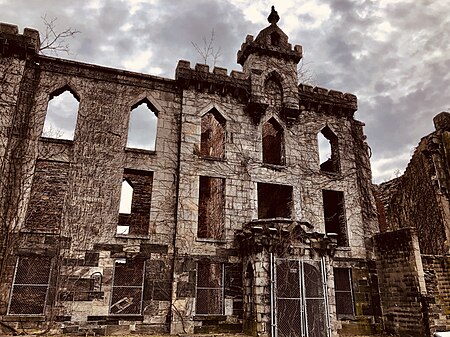Smallpox Hospital

The Smallpox Hospital, sometimes referred to as the Renwick Smallpox Hospital and later the Maternity and Charity Hospital Training School, was a hospital located on Roosevelt Island in Manhattan, New York City. Originally designed by architect James Renwick Jr., the 100-bed hospital opened in 1856, when the area was known as Blackwell's Island.A century after it opened, the hospital was closed, and the building eventually fell into disrepair. It was listed on the National Register of Historic Places in 1972 and designated a New York City Landmark four years later, the only ruin in the city with that designation. After the completion of an ongoing $4.5 million stabilization project, the Smallpox Hospital ruins will be open to the public.
Excerpt from the Wikipedia article Smallpox Hospital (License: CC BY-SA 3.0, Authors, Images).Smallpox Hospital
East Road, New York Manhattan
Geographical coordinates (GPS) Address External links Nearby Places Show on map
Geographical coordinates (GPS)
| Latitude | Longitude |
|---|---|
| N 40.751666666667 ° | E -73.959444444444 ° |
Address
Smallpox Hospital (Smallpox Memorial Hospital)
East Road
11109 New York, Manhattan
New York, United States
Open on Google Maps








